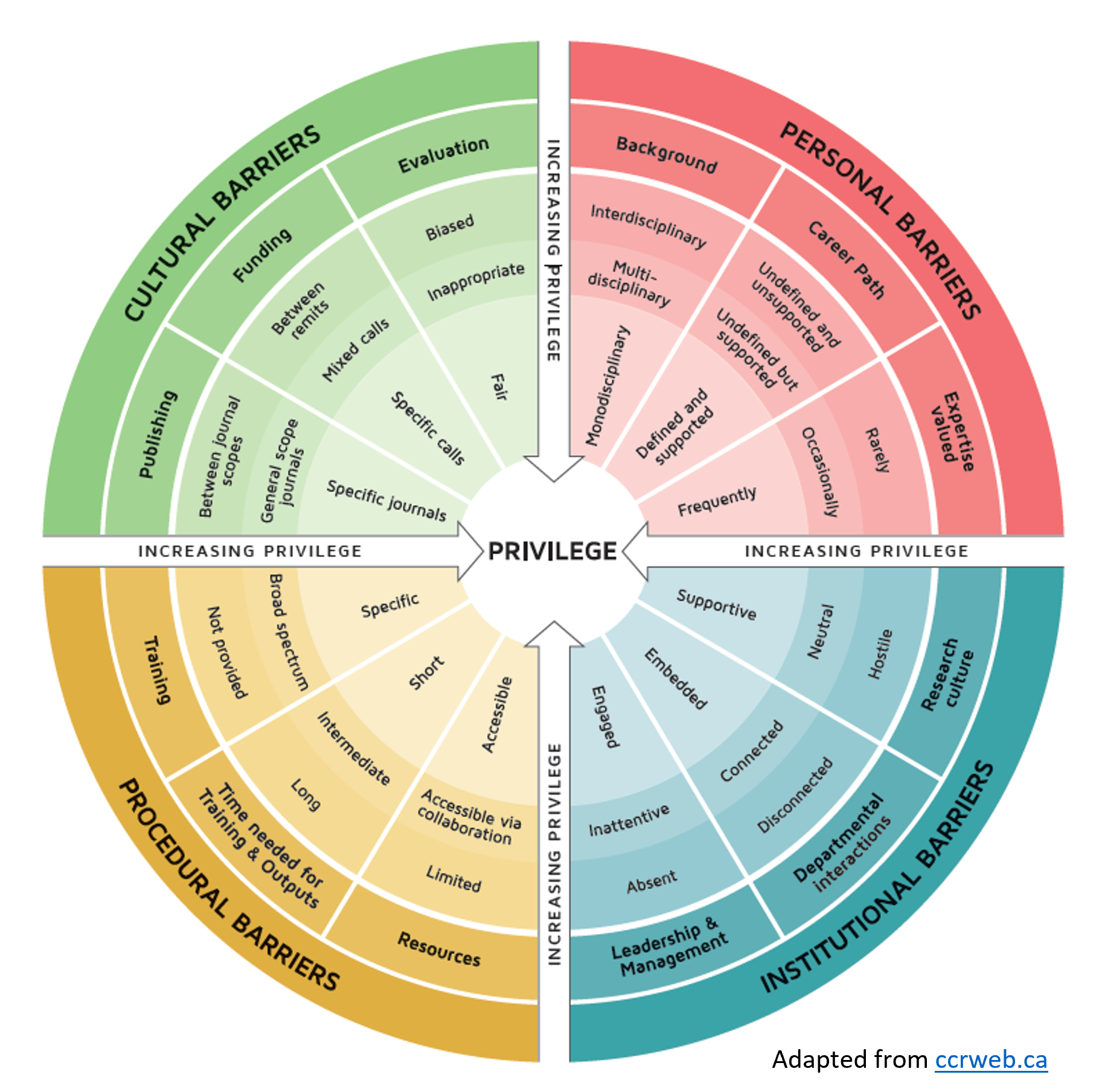The workshop was framed as a 2-hours online round-table discussion, mediated by an independent facilitator. It focused on three main discussion areas. Throughout the session, various action points were identified and synthesised into recommendations by X-Net for higher education institutions and research institutes. These recommendations aim to promote a research culture change that fosters inclusivity and collaboration catalysing interdisciplinary research.


The identification of risks linked to a career in IDR involves various aspects, such as engaging in challenging conversations to remove problems, questioning the traditional norms of academic leadership, and critically analyzing the underlying assumptions within language.

In relation to allocating targeted funding to marginalized individuals, emphasizing suitability for the position rather than career trajectory, recognizing various routes to leadership, and backing openly marginalized communities.

Nurture an environment that is welcoming, trustworthy, and encouraging, by offering leadership development programs, ensuring fair representation on decision-making panels, and promoting external involvement.
To foster a supportive interdisciplinary research environment, it is crucial to undergo a significant cultural transformation that promotes collaboration over competition and embraces diverse perspectives. The aims of the meeting were to:
• Recognise additional equality, diversity, and inclusion (EDI) challenges faced by interdisciplinary researchers.
• Learn about practical interventions that have successfully transformed inclusion and research culture that might be adapted to enable research organisations to overcome research culture issues experienced by interdisciplinary scientists.
• Identify mechanisms that improve support to interdisciplinary researchers and enable the creation of a collaborative rather than competitive scientific culture.

X-Net “Interdisciplinary Career Wheel of Privilege”
X-Net designed a visual aid called the “Interdisciplinary Career Wheel of Privilege”, to show the obstacles that interdisciplinary researchers encounter in academia. The barriers are categorised into four main themes. Each section of the wheel represents a specific barrier, labelled in the second outer ring. The inner rings show the different positions researchers may be in. Those closer to the centre are more supported and privileged, while those towards the outer ring are less supported. Arrows indicate that the closer you are to the centre, the more privilege and power you have. Interdisciplinary researchers often find themselves in situations that position them towards the outer perimeter.


